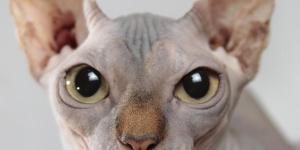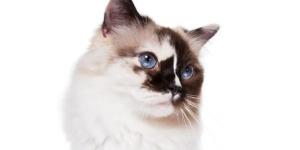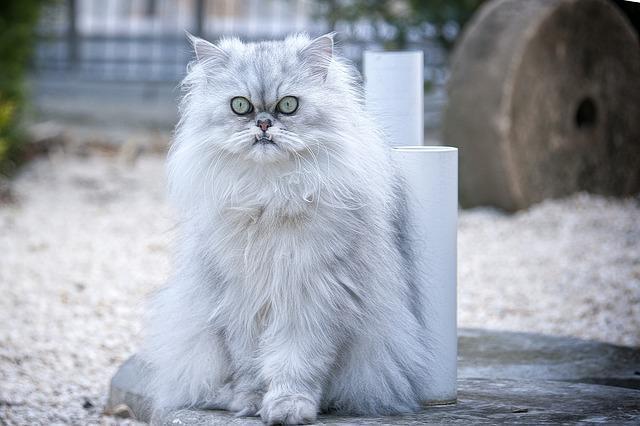Caring for a Persian Cat



See files for Cats
Caring for a Persian cat has some specific requirements which are not applicable to all cat breeds. While we need to ensure our cat has all their basic dietary, security and emotional needs met, Persian cats have traits which not all cat breeds have. For example, Persians are longhaired cats. This means we will need to provide extra care in grooming, as well as preventing knots and other coat problems. They are also a brachycephalic cat breed, meaning we need to take care of issues that non-brachycephalic cats do not develop.
At AnimalWised, we go into detail about Persian kitty care. We discover the specific care needs of Persians, as well as all the general care they require to remain healthy and happy.
How to care for a Persian kitty
When caring for a Persian cat, there are several important considerations to ensure their health and wellbeing. Here are some key points to keep in mind:
- Grooming: Persian cats have long, luxurious coats that require regular grooming to prevent matting and keep their fur clean.
- Eye care: Persian cats are prone to eye-related issues due to their facial structure and long hair around the face.
- Indoor living: Persian cats are generally better suited for indoor living due to their long coat and brachycephalic (flat-faced) features. Outdoor environments can expose them to potential hazards, such as extreme temperatures, parasites, or injuries.
- Nutrition: provide a balanced and high-quality diet specifically formulated for Persian cats. Their dietary needs may differ from other cat breeds due to potential issues with digestion and urinary health. Consult with a veterinarian to determine the appropriate diet, portion sizes, and feeding schedule for your Persian cat to maintain a healthy weight and prevent common health problems.
- Health monitoring: regular veterinary check-ups are crucial for Persian cats. They may be more prone to certain health issues, including respiratory problems, dental issues, and polycystic kidney disease. Routine examinations, vaccinations, parasite prevention, and dental care can help identify and address any health concerns early on.
- Environmental enrichment: Persian cats can be relatively low-energy and enjoy a calm environment. Providing them with opportunities for mental stimulation, such as interactive toys, puzzle feeders, and gentle playtime, can keep them engaged and prevent boredom.
- Temperature control: Persian cats are sensitive to extreme temperatures. Ensure they are kept in a comfortable environment, avoiding exposure to excessively hot or cold conditions. Provide access to cool areas during warmer months and keep them warm and cozy during colder months.
- Dental hygiene: regular dental care is essential for Persian cats. Their flat faces can lead to dental crowding and increased risk of dental disease. Brushing their teeth regularly, offering dental treats or toys, and scheduling professional dental cleanings when necessary can help maintain their oral health.
Remember, every Persian cat is unique, and their care requirements may vary. These are some of the basics of Persian kitty care which we need to consider if we adopt one of these felines into our home. Below, we look at some of these key Persian cat care issues in more detail.
Caring for a Persian cat's coat
The Persian cat has long and abundant fur that you will need to care for daily. You must brush your Persian cat every day using a slicker brush. This is a type of hairbrush which is particularly good for longhaired cats. We should also finish off their grooming with a metal brush that has rounded spikes. This will help condition the Persian cat's coat after you have removed any knots or tangles.
The cat should get used to this process from a young age. In doing so, brushing will become a moment of care, relaxation and bonding that you can share. Your aim is to remove the knots and tangles that may have formed during the day as well as removing dead hair. You will notice your Persian cat loses a lot of hair when you brush them.
If you do not brush your Persian cat daily, you will increase the likelihood of knots. This is something you will need to address which may require cutting the cat's hair. Grooming a Persian cat is a difficult prospect, so it is best to go to a groomer. Although daily grooming can seem like a chore, it will be cheaper and better for the cat in the long run.
All cats are hygienic animals that lick themselves to stay clean. Persian cats can swallow some of the dead hair that has not been removed through brushing. Since they are a longhaired cat breed, they are at greater risk of developing trichobezoars, otherwise known as hairballs in cats. In the best case scenario, the cat will vomit the hairball. However, it is possible the hairball could cause an intestinal blockage that poses a medical emergency.
If poorly maintained, the longhair of Persian cats could become a nest for fleas or other external parasites. Besides daily brushing, another aspect of caring for a Persian cat consists of bathing them every 2 to 3 months with specific shampoo for cats that respects the pH of their skin.
Here you can learn more about caring for a Persian cat's coat.

Caring for a Persian cat's eyes
Caring for a Persian cat's eyes is crucial due to their specific facial structure and the potential for eye-related issues. This is because they are a type of brachycephalic cat breed, colloquially known as flat-faced cat breeds. Brachycephaly results in the cat's eyes bulging out of their sockets, among other issues. This causes them to have more lacrimation, as well as greater risk of disease. You will need to consider the following when caring for a Persian kitty's eyes:
- Regular cleaning: Persian cats often have excessive tearing and eye discharge due to their facial structure. Use a soft, damp cloth or a vet-recommended eye wipe to gently clean the area around their eyes. Wipe away any debris, crust, or tear stains. Be careful not to apply excessive pressure or irritate the eyes.
- Tear stain prevention: tear stains can develop under the eyes, causing discoloration. Regular cleaning can help prevent tear stains from becoming excessive. Additionally, you can consult your veterinarian about tear stain removal products or dietary supplements that can help reduce tear staining.
- Watch for signs of eye problems: monitor your Persian cat's eyes for any signs of redness, swelling, excessive tearing, discharge, cloudiness or squinting. These can indicate an underlying eye condition or infection. If you notice any abnormalities or if your cat seems to be in discomfort, consult a veterinarian promptly for a proper diagnosis and treatment.
- Prevent eye injury: a Persian cats' prominent eyes are more vulnerable to injury. Keep the environment free of sharp objects or potential hazards that could cause harm to their eyes. Be cautious when handling them and avoid accidentally poking or scratching their eyes.
- Regular veterinary check-ups: schedule regular veterinary examinations to have your Persian cat's eyes checked. The veterinarian can assess their eye health, screen for any underlying conditions and provide appropriate treatments or preventive measures.
- Eye drops or ointments: if your veterinarian prescribes eye drops or ointments for your Persian cat, follow their instructions carefully. Administer the medication as directed and monitor for any improvement or side effects. Be cautious not to touch the dropper or tube directly to the eye to prevent further contamination.
Learn more about caring for a cat's ocular health with our article on how to clean a cat's eyes.
Caring for a Persian cat's ears
Persian cats produce more or less earwax according to each cat. In general, it is advisable to clean their ears weekly so to prevent mites, fungi or bacterial infections and also to keep your cat get used to the procedure.
With clean soft gauze soaked in water, clean up all the external surface on the inside of the ear. Use a cotton swab to clean the grooves of the ear, but never enter the swab into the ear canal. If you have doubts, it is better to simply use toilet paper.
For a more detailed methodology, take a look at our article on how to clean the ears of a cat.

Caring for a Persian cat's claws
You should trim your Persian cat's claws every 2 weeks. As with cleaning the eyes and ears of Persian cats, you should get your cat used to the procedure from a young age. We recommend clipping the cat's nails just before bathing them to facilitate their handling, as well as to get all the unpleasant activities out of the way.
Generally speaking, Persian cats are quite sedentary and prefer to live inside the home. However, some are actually quite curious and adventurous. If this is the case, they may want go into the garden and hunt. Keep in mind that if there are other cats in the neighborhood they may get into a fight, a Persian cat's flat face can make this difficult. Preventing your cat from wandering around without supervision will help stop possible attacks.
What is the best diet for a Persian cat?
The best diet for a Persian cat should provide balanced nutrition, address their specific dietary needs, and promote overall health. Here are some considerations for a suitable diet:
- High-quality cat food: choose a high-quality commercial cat food that is specifically formulated for Persian cats or for long-haired breeds. Look for products that meet the nutritional standards set by recognized organizations like the Association of American Feed Control Officials (AAFCO). These diets are designed to provide the necessary nutrients for cats, including protein, fats, carbohydrates, vitamins, and minerals.
- Animal-based protein: cats are obligate carnivores, so their diet should primarily consist of animal-based protein sources. Look for cat foods with high-quality proteins like chicken, turkey, or fish. Ensure that the protein source is named and listed as the main ingredient on the label.
- Balanced nutrients: the diet of a Persian kitty should provide a proper balance of nutrients, including essential fatty acids such as omega-3 and omega-6 for healthy skin and coat. It should also have appropriate levels of vitamins and minerals to support their overall health and well-being.
- Digestive health: Persian cats can be more prone to digestive issues. Look for cat foods that are easily digestible and do not contain ingredients that commonly cause gastrointestinal problems, such as artificial additives, fillers, or low-quality grains.
- Hairball control: since Persian cats are more likely to develop hairballs due to their long hair, choose cat foods that specifically address hairball control. These often contain additional fiber to aid in the passage of hair through the digestive system. We can also give them regular doses of malt paste for cats to aid gastrointestinal transit.
- Moisture content: cats have a low thirst drive, so it's important to ensure they receive sufficient hydration. Consider incorporating wet or canned cat food into their diet, as it has a higher moisture content compared to dry kibble. Adequate hydration supports kidney function and helps prevent urinary tract issues.
- Feeding schedule and portion control: establish a regular feeding schedule and portion control to maintain a healthy weight for your Persian cat. Obesity can lead to various health problems, so it's essential to monitor their food intake and provide appropriate portion sizes based on their age, weight, and activity level. Consult with a veterinarian for guidance on portion sizes and feeding frequency.
- Veterinary guidance: it's always a good idea to consult with a veterinarian for specific dietary recommendations tailored to your Persian cat's individual needs. They can provide guidance based on factors such as their age, health condition, and any specific dietary requirements.
Remember, every cat is unique, and their dietary needs may vary. Regular monitoring, observation of your Persian cat's body condition, and consultation with a veterinarian will help ensure that their diet is appropriate and meets their specific nutritional requirements.

How long do Persian cats live?
Persian cats have an average lifespan of around 12 to 16 years. With proper care, some Persian cats can live even longer, reaching their late teens or early twenties. The lifespan of a Persian cat can be influenced by various factors, including genetics, overall health, diet, environment and veterinary care.
It's important to note that individual cats may vary and some may have shorter or longer lifespans than the average. Regular veterinary check-ups, preventive care, a balanced diet, exercise and a stress-free environment can contribute to a Persian cat's overall health and potentially extend their lifespan. One of the most important aspects of preventive care is the establishment of suitable deworming and vaccination schedules for cats.
If you have a Persian cat, providing them with proper nutrition, grooming, attention to their specific needs and regular veterinary care can help promote a healthy and fulfilling life. It will also help to improve your bond and ensure your Persian kitty is happy in your family.

If you want to read similar articles to Caring for a Persian Cat, we recommend you visit our Basic care category.







 I want to know the breed name of my cat.
I want to know the breed name of my cat.

 What is correct Breed Name for my cute Persian Kitten
What is correct Breed Name for my cute Persian Kitten




